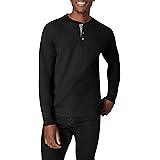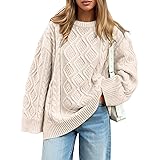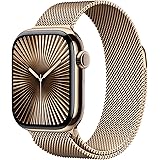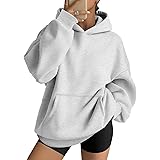As the visual guide above so vividly demonstrates, the enduring appeal of 90s streetwear continues to shape contemporary fashion landscapes, offering a rich palette for those seeking a unique summer glowup. This iconic decade wasn’t merely a fleeting trend; it represented a profound cultural shift, blending influences from hip-hop, grunge, and skate cultures into a distinctive, often oversized, aesthetic. Understanding its foundational elements is key to authentically channeling that quintessential 90s vibe today.
The 1990s marked a pivotal moment where fashion transcended high-end runways to be heavily dictated by the streets, reflecting a desire for authenticity, comfort, and self-expression. From the gritty urban corners to the sun-drenched skate parks, youth culture drove an explosion of relaxed silhouettes and bold branding that still resonates deeply within modern style narratives. This comprehensive guide delves into the core tenets of 90s streetwear, providing expert insights to help you craft your ultimate summer look.
Embracing the Core Ethos of 90s Streetwear
The spirit of 90s streetwear was undeniably rebellious, a direct counterpoint to the polished excess of the 1980s. It prioritized comfort and individuality, allowing wearers to convey their identity through their sartorial choices. This era saw a significant democratizing of fashion, with trends bubbling up from subcultures rather than trickling down from haute couture. Understanding this ethos is the first step in mastering your 90s-inspired wardrobe.
Functionality often intertwined with style, giving rise to utility wear that was both practical and fashionable. Think cargo pants, durable denim, and robust outerwear that could withstand the rigors of city life or a skate session. This blend of form and function defined many of the era’s most iconic pieces, setting a precedent for modern athleisure and workwear aesthetics. Capturing this blend ensures your look feels genuinely rooted in the decade.
1. Key Influences: Hip-Hop, Grunge, and Skate Culture
Several potent cultural forces converged to define 90s streetwear, each contributing distinct elements to its rich tapestry. Hip-hop culture championed bold logos, oversized silhouettes, and vibrant colors, personified by labels like Tommy Hilfiger and FUBU. Artists like Tupac Shakur and TLC became style icons, their looks influencing millions and cementing streetwear’s place in mainstream fashion. This influence brought an undeniable swagger and confidence to the aesthetic.
Grunge, emerging from the Pacific Northwest, introduced a raw, anti-establishment sensibility with its flannel shirts, ripped denim, and band tees. Bands such as Nirvana inspired a deliberately unkempt, effortless cool that challenged traditional notions of fashion. While seemingly disparate from hip-hop, grunge shared streetwear’s emphasis on comfort and personal expression, albeit with a darker, more introspective edge. This subculture’s impact brought a sense of authenticity and rebellion.
Skate culture, meanwhile, prioritized durable, practical clothing designed for movement and resilience. Baggy jeans, graphic t-shirts, and sturdy skate shoes were not just fashion statements but essential gear for navigating ramps and rails. Brands like Vans and Supreme (which started in the 90s) became synonymous with this movement, shaping a utilitarian yet effortlessly cool aesthetic. The blend of these three forces created a diverse and dynamic fashion landscape.
2. Mastering the Signature Silhouettes and Fabrics
The 90s silhouette was predominantly loose and relaxed, a stark contrast to the tailored fits that preceded it. Baggy jeans, wide-leg trousers, and oversized t-shirts were ubiquitous, offering unparalleled comfort and freedom of movement. This move towards less restrictive clothing reflected a broader societal shift towards casualization and an embrace of individualism over rigid conformity. It truly became a uniform for rebellion against traditional sartorial norms.
Denim reigned supreme, appearing in various washes and cuts, from light-wash “mom” jeans to dark indigo overalls. Beyond denim, popular fabrics included cotton jersey for t-shirts and hoodies, nylon for tracksuits and windbreakers, and flannel for shirts. The emphasis was often on durability and a somewhat rugged aesthetic, even in more polished streetwear interpretations. These fabric choices underscored the era’s commitment to practical, everyday wear.
3. Essential Wardrobe Staples for Your 90s Summer Glowup
To truly achieve a 90s streetwear summer glowup, incorporating several key pieces is paramount. These foundational garments will form the backbone of your retro-inspired looks, allowing you to mix and match with modern sensibilities. The right combination can transport your style back three decades while keeping it fresh and relevant for today’s summer heat.
- Baggy Denim: Whether light-wash straight-leg jeans, distressed carpenter pants, or even denim shorts that hit at the knee, baggy denim is non-negotiable. Opt for a relaxed fit that allows for ample movement and a laid-back vibe.
- Graphic Tees: Think band tees, oversized sports jerseys, or tees featuring bold, abstract graphics and logos. These were often worn several sizes too large, paired with baggy bottoms.
- Crop Tops and Ribbed Tanks: For a more feminine or minimalist take, ribbed crop tops, tube tops, and simple tank tops were essential, often worn with high-waisted denim or cargo pants. This offered a refreshing contrast to the oversized tops.
- Tracksuits and Windbreakers: Often made of crinkly nylon in vibrant color-blocked patterns, tracksuits embodied the athleisure trend of the decade. A vintage windbreaker is perfect for cooler summer evenings or adding a sporty layer.
- Utility Shorts and Cargo Pants: Practicality met style with an abundance of utility shorts and cargo pants, featuring multiple pockets. Earthy tones like olive, khaki, and beige were particularly popular, providing functional fashion.
4. Footwear and Accessories: The Finishing Touches
No 90s streetwear ensemble is complete without the right footwear and accessories, which often served as definitive statements. These elements can dramatically elevate an outfit, solidifying its retro authenticity while adding personal flair. Pay close attention to these details to truly capture the essence of a 90s summer.
- Chunky Sneakers: Brands like Nike Air Max, Fila Disruptors, and various Reebok models with visible tech were everywhere. Opt for bold, sometimes brightly colored, chunky silhouettes that stand out.
- Bucket Hats: A quintessential 90s accessory, bucket hats protected from the sun while adding an undeniable cool factor. Choose denim, canvas, or even patterned options to match your vibe.
- Small Sunglasses: Oval or rectangular frames with a narrow profile were the go-to, often in dark or tinted lenses. These added a touch of minimalist chic to any outfit.
- Fanny Packs (Waist Bags): Once relegated to tourists, the fanny pack made a stylish comeback in the 90s, worn across the chest or at the waist. They offered practical storage and a distinctive street edge.
- Chokers and Chain Necklaces: Simple tattoo chokers or chunky silver chain necklaces were popular, adding a subtle yet impactful detail. Layering these pieces was also a common styling choice.
5. Integrating 90s Streetwear into Your Modern Summer Aesthetic
The beauty of 90s streetwear lies in its timeless appeal and adaptability, making it perfect for a contemporary summer glowup. The key is not to replicate a costume but to selectively integrate elements that resonate with your personal style. Think about combining vintage pieces with modern staples for a fresh, current look.
One effective strategy involves balancing oversized items with more fitted ones to create a harmonious silhouette. For instance, pair baggy cargo pants with a sleek, minimalist crop top, or an oversized graphic tee with tailored denim shorts. This juxtaposition creates visual interest and prevents the look from feeling dated, injecting a contemporary sensibility into classic 90s streetwear components. Another approach is to focus on specific accessories like a vintage bucket hat or chunky sneakers to add just a hint of nostalgia to an otherwise modern outfit.











